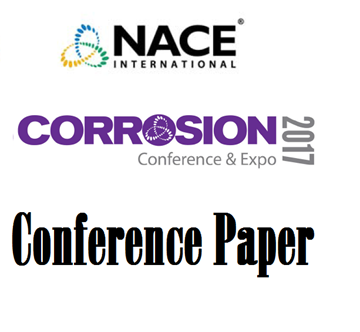Search
Products tagged with 'h2s'
View as
Sort by
Display
per page
Selection and Testing of Fusion Bond Epoxy Coating for High Pressure Pipelines with H2S and CO2 Acid Gases
Product Number:
51323-19482-SG
Publication Date:
2023
$20.00
Selective Dissolution Forming During Sour Testing of Duplex Stainless Steels. Is It Critical?
Product Number:
51323-18834-SG
Publication Date:
2023
$20.00
Sour Service Limit Of 17% Cr Stainless Steels Grades For OCTG
Product Number:
51321-16637-SG
Publication Date:
2021
$20.00
Sour Under-Deposit Corrosion With Different Iron Sulfides
Product Number:
51321-16703-SG
Publication Date:
2021
$20.00
SP0296-2016 (formerly RP0296), Detection, Repair, and Mitigation of Cracking in Refinery Equipment in Wet H2S Environments
Product Number:
21078-SG
ISBN:
1-57590-013-0
Publication Date:
2016
$179.00
SP0296-2020, Detection, Repair, and Mitigation of Cracking in Refinery Equipment in Wet H2S Environments
Product Number:
SP0296-2020
Publication Date:
2020
$109.00
Sulfide Stress Cracking Of Low Alloy Steels For Oil And Gas Production: Revisiting The Effect Of Ni As An Alloying Element
Product Number:
51321-16549-SG
Publication Date:
2021
$20.00
Test Equipment for Sour TLC Testing
Product Number:
51317--9337-SG
ISBN:
9337 2017 CP
Publication Date:
2017
$20.00
The Development of Novel Corrosion Inhibitors for High Temperature Sour Gas Environments
Product Number:
51320-14591-SG
Publication Date:
2020
$20.00
The Effect Of Mill Scale On OCTG Sour Cracking Resistance
Product Number:
51321-16579-SG
Publication Date:
2021
$20.00
The Effects of H2S and Cl- on Hydrogen Permeation in High Strength Low Alloy Carbon Steels
Product Number:
51321-16329-SG
Publication Date:
2021
$20.00
The Influence Of Applied Extension Rate And Specimen Geometry On Assessment Of SSC Resistance By Novel NTSSRT Method
Product Number:
51322-17624-SG
Publication Date:
2022
$20.00












